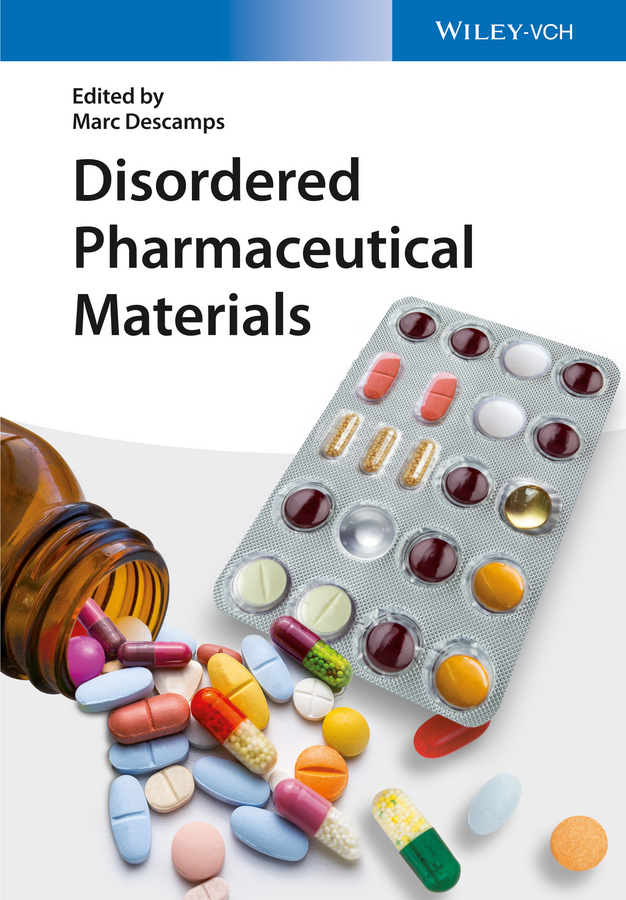
A one–stop resource for researchers and developers, this handbook and ready reference provides detailed, but not overloaded information –– presenting the topic without unnecessarily complex formalism. As such, it gives a systematic and coherent overview of disordered materials for pharmaceutical applications, covering fundamental aspects, preparation and characterization techniques as well as molecular modeling approaches for the target–oriented development of drug delivery systems based on amorphous solids. Chapters on the challenges of using these materials in large–scale processes in the pharmaceutical industry and on patenting issues round off the book. For pharmaceutical and medicinal chemists, materials scientists, clinical physicists, and pharmaceutical laboratories looking to make better and more potent pharmaceuticals. INDICE: FUNDAMENTAL ASPECTS OF DISORDER. Disorder and Structure: Existence and Absence of Long Range Order. Disorder and Molecular Mobility. Disorder and Thermodynamics: Entropy and Role of Disorder in the Stability of Physical States. Chemical Disorder. Short Range Organization in Disordered Materials: Static and Dynamic Intermolecular Correlations. RELEVANCE OF DISORDER FOR PHARMACEUTICAL PRODUCTS. Disorder and Solubility. Disorder and Stability (Physical and Chemical). Disorder and Drug Delivery. Drawback and Opportunities of Disorder. EXPERIMENTAL METHODS FOR THE INVESTIGATION OF DISORDERED MATERIALS. Investigation of Structure: Diffraction Experiments, Spectroscopies. Investigation of Mobility (Relaxations and Vibrations). Thermodynamic and Calorimetric Investigations. Chemical Aspects. Imaging Methods . HOW DISORDERED CAN PERFECT MOLECULAR CRYSTALS BE?. Condition for the Existence of a Crystalline Order. Disordered Perfect Crystals: Substitutional, Conformational, Rotational Disorder. Crystalline Polymorphism and Disorder. Order–Disorder Phase Transitions in Molecular Crystals. Static and Dynamic Disorder in Crystals: Vibrations, Molecular Rotations, Solid Solutions. Defective Crystals. Dislocation Disorder. Microcrystalline Order. Experimental Consequences. AMORPHOUS AND GLASSY STATE. Molecular Organization in Amorphous Molecular Solids. Intermediate Range Order. Metastability and Instability of Amorphous Materials. Crystallization out of the Amorphous State;. Vitrification Condition;. Glass Transition at Tg. Molecular Mobility in the Amorphous Materials Above and Below Tg. Aging of Glasses. Glass Transition of Solutions. AMORPHOUS PHARMACEUTICALS. Preparation Techniques: Spray Drying, Freeze Drying, Extrusion, Milling. Impacts of Glass Properties on Mechanical and Surface Properties: Agglomeration, Flowability, Caking, Dissolution. Stability Issues and Possible Stability Manipulations. Amorphous Intermediates in Cocrystal Formation. MESOMORPHIC MATERIALS FOR DRUG DELIVERY. Liquid Crystals. Plastic Crystals. Macromolecular Disorder. Solubilities of Drug in Polymer. Release of a Drug from Dissolving Polymer. Gel Formation, Hydrogels. NUMERICAL MODELING OF DISORDERED PHARMACEUTICAL MATERIALS. Validity of Force Fields Used in Drug Molecular Modeling. Property–dependent Choice of Simulation Models. Modeling and Prediction of Properties. Modeling as an Help to Interpret Data . PROCESS AND DISORDER. Disorder Accidentally or Unavoidably Produced in the Course of Processing Ordered Materials. Processing of Disordered Materials . PATENTING OF DISORDERED PHARMACEUTICAL PRODUCTS.
- ISBN: 978-3-527-33125-3
- Editorial: Wiley VCH
- Encuadernacion: Cartoné
- Páginas: 544
- Fecha Publicación: 29/06/2016
- Nº Volúmenes: 1
- Idioma: Inglés
